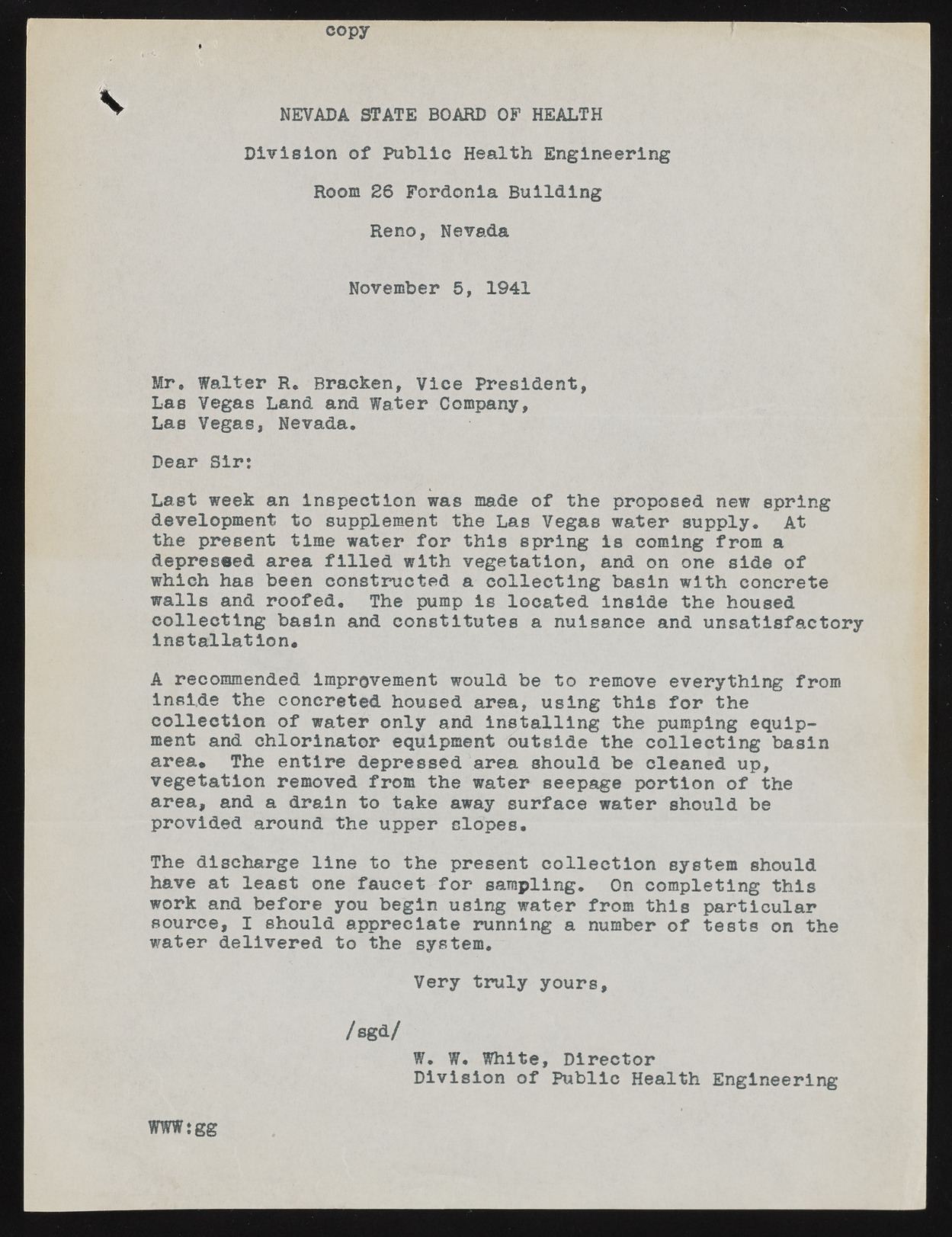Copyright & Fair-use Agreement
UNLV Special Collections provides copies of materials to facilitate private study, scholarship, or research. Material not in the public domain may be used according to fair use of copyrighted materials as defined by copyright law. Please cite us.
Please note that UNLV may not own the copyright to these materials and cannot provide permission to publish or distribute materials when UNLV is not the copyright holder. The user is solely responsible for determining the copyright status of materials and obtaining permission to use material from the copyright holder and for determining whether any permissions relating to any other rights are necessary for the intended use, and for obtaining all required permissions beyond that allowed by fair use.
Read more about our reproduction and use policy.
I agree.Information
Digital ID
Permalink
Details
More Info
Rights
Digital Provenance
Publisher
Transcription
copy ^ NEVADA STATE BOARD OF HEALTH Division of Public Health Engineering Room 26 Fordonia Building Reno, Nevada November 5, 1941 Mr. Walter R. Bracken, Vice President, Las Vegas Land and Water Company, Las Vegas, Nevada. Dear Sir: Last week an inspection was made of the proposed new spring development to supplement the Las Vegas water supply. At the present time water for this spring is coming from a depreseed area filled with vegetation, and on one side of which has been constructed a collecting basin with concrete walls and roofed. The pump is located inside the housed collecting basin and constitutes a nuisance and unsatisfactory Installation. A recommended improvement would be to remove everything from inside the concreted housed area, using this for the collection of water only and installing the pumping equipment and chlorinator equipment outside the collecting basin area. The entire depressed area should be cleaned up, vegetation removed from the water seepage portion of the area, and a drain to take away surface water should be provided around the upper slopes. The discharge line to the present collection system should have at least one faucet for sampling. On completing this work and before you begin using water from this particular source, I should appreciate running a number of tests on the water delivered to the system. Very truly yours, / sgd/ WWWjgg W. W. White, Director Division of Public Health Engineering

